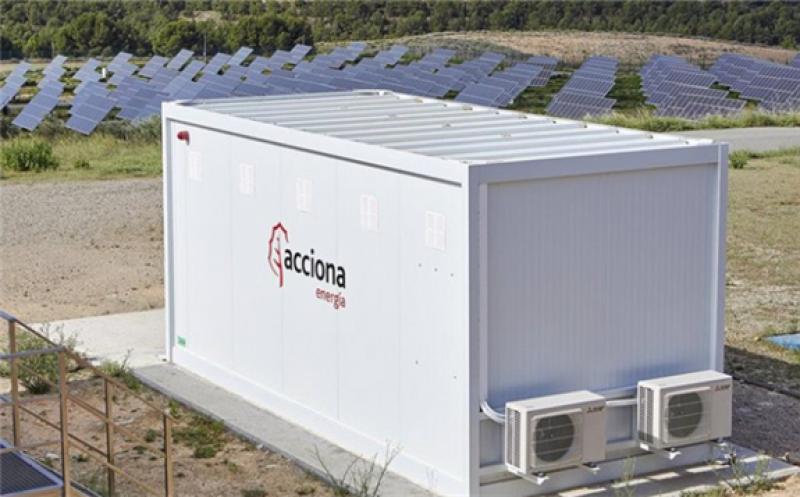Spanish renewable energy company Acciona has connected to the grid the first storage station developed with recycled batteries at its 1.2 MW photovoltaic park in Tudela, in Spain's Navarra region, as part of a joint project developed with the startup BeePlanet under the umbrella of Acciona's open innovation program, I’mnovation.
 The battery station deployed by Acciona. Image: Acciona
The battery station deployed by Acciona. Image: Acciona
Acciona has installed four second-life batteries from car manufacturer Nissan with a combined capacity of 130 kWh at its solar park. The battery station will be operated by the company's Renewable Energy Control Center with its global GEMS energy management platform and renewable energy will be certified throughout the process through Acciona's Greenchain platform, based on blockchain. The company will also conduct a comparative analysis to verify whether recycled batteries can offer the same benefits as first-use batteries.
Acciona's director of energy innovation, Belén Linares, explained that second-life batteries can be “an ideal option to complement self-consumption facilities, electric vehicle recharging networks, and micro-grids.”
According to BeePlanet, the batteries used in the project have more than 80% of their original capacity operational and a maximum of 5% is discharged in 24 hours, to ensure the maximum performance.
The Spanish start-up announced in May the launch of a new storage system of up to 1 MWh with second-life batteries, which it called Power ESS. The system can be used in the commercial and industrial, primary and construction sectors and can be integrated with photovoltaic and wind plants.
It is a flexible and modular system. Starting from a 42 kWh rack, it can be expanded by modules connected in parallel up to 1 MWh. “In this way, once we have dimensioned the project, we install the necessary racks, knowing that if capacity needs to be expanded in the future, it will be very simple,” the company explained.
The system can be installed indoors and outdoors. Turnkey Power ESS containerized solutions are installed outdoors. The equipment is made up of replaceable units. “In this way, we are able to increase the life cycle of the installation. When we detect, through remote maintenance, that there is a … unit that has reached its capacity limit, we take care of replacing and recycling it,” it went on to say.